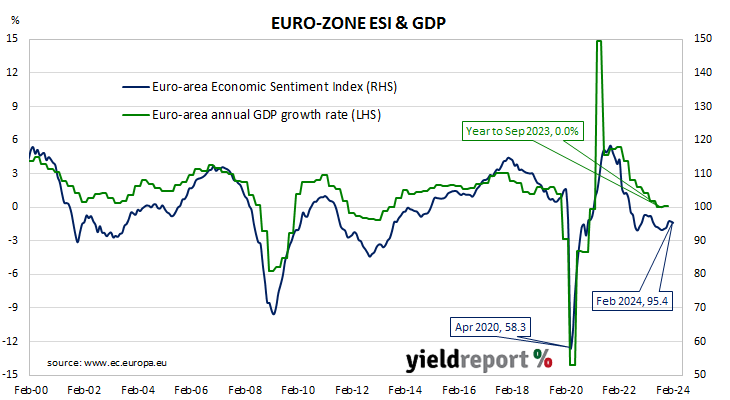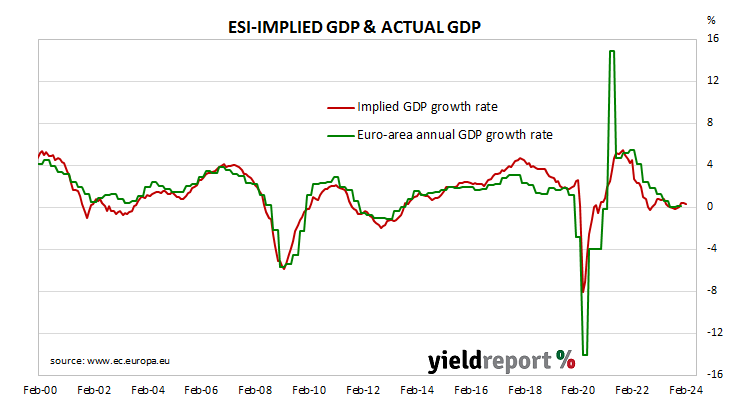Summary: Euro-zone composite sentiment indicator down slightly in February, below expectations; readings down in four of five sectors; down in all four largest euro-zone economies; German, French 10-year yields decline slightly; index implies annual GDP growth rate of 0.3%.
The European Commission’s Economic Sentiment Indicator (ESI) is a composite index comprising five differently weighted sectoral confidence indicators. It is heavily weighted towards confidence surveys from the business sector, with the consumer confidence sub-index only accounting for 20% of the ESI. However, it has a good relationship with euro-zone GDP growth rates, although not necessarily as a leading indicator.
The ESI posted a reading of 95.4 in February, below the generally-expected figure of 96.6 and down slightly from January’s revised reading of 95.8. The average reading since 1985 is just under 100.
Long-term German and French 10-year bond yields declined slightly on the day. By the close of business, German and French 10-year yields had both slipped 1bp to 2.45% and 2.93% respectively.
Confidence deteriorated in four of the five sectors of the economy. On a geographical basis, the ESI decreased in all four of the euro-zone’s largest economies.
End-of-quarter ESI readings and annual euro-zone GDP growth rates are highly correlated. This latest reading corresponds to a year-to-February GDP growth rate of 0.3%, down from January’s implied growth rate of 0.4%.



